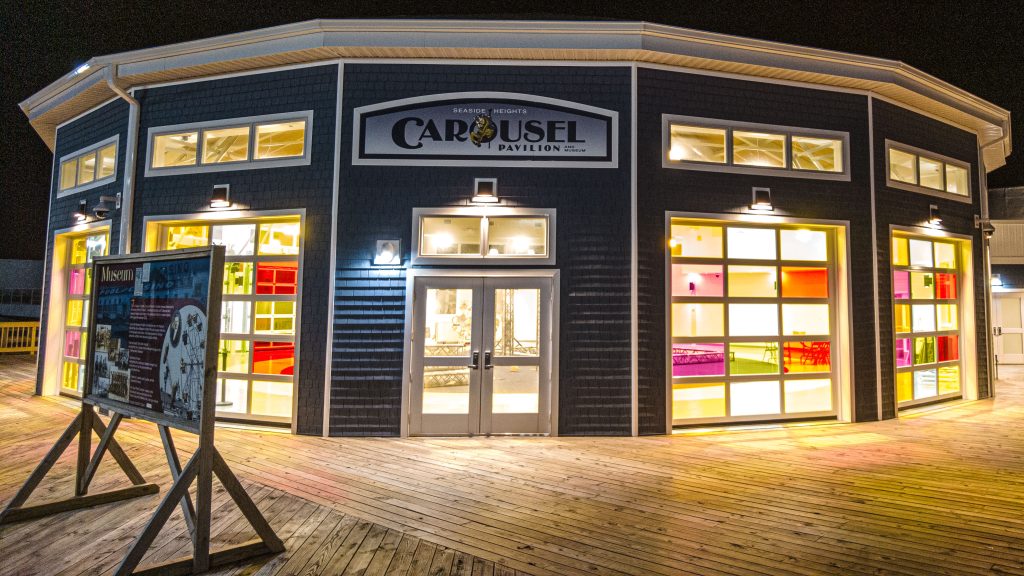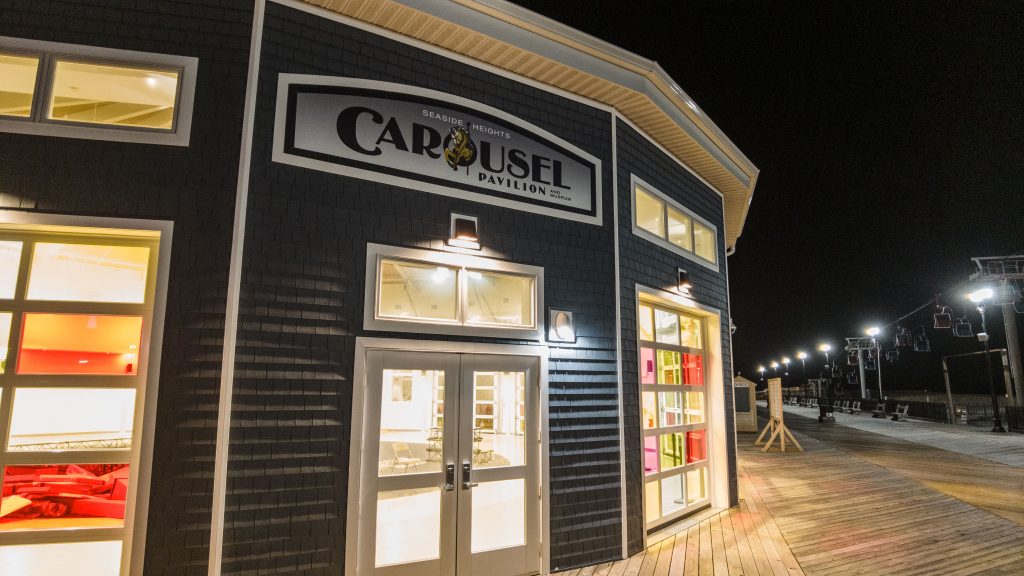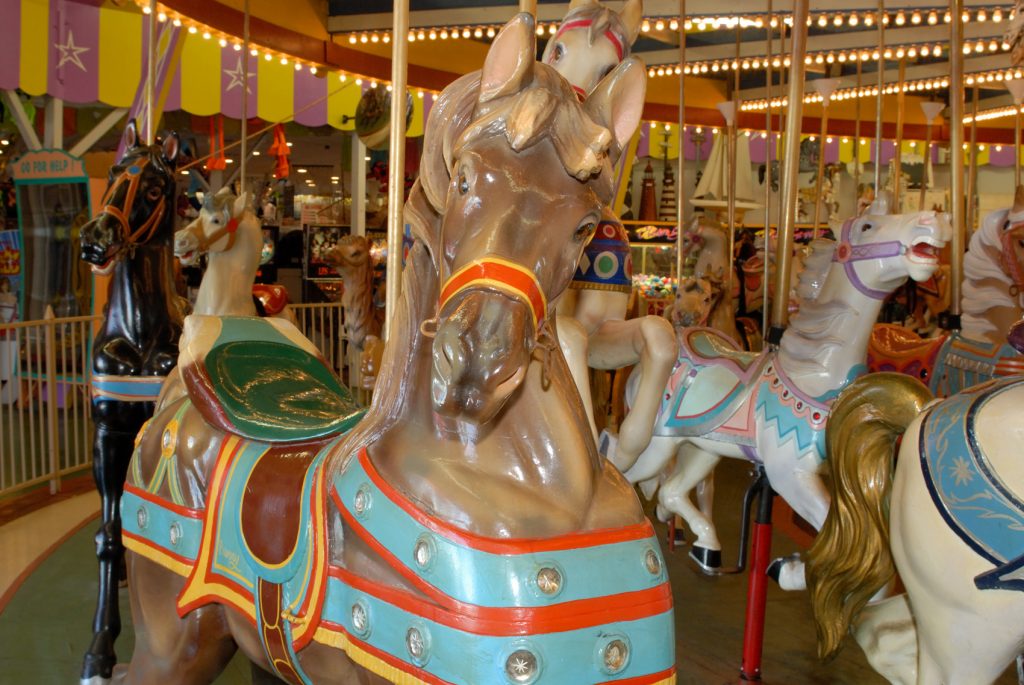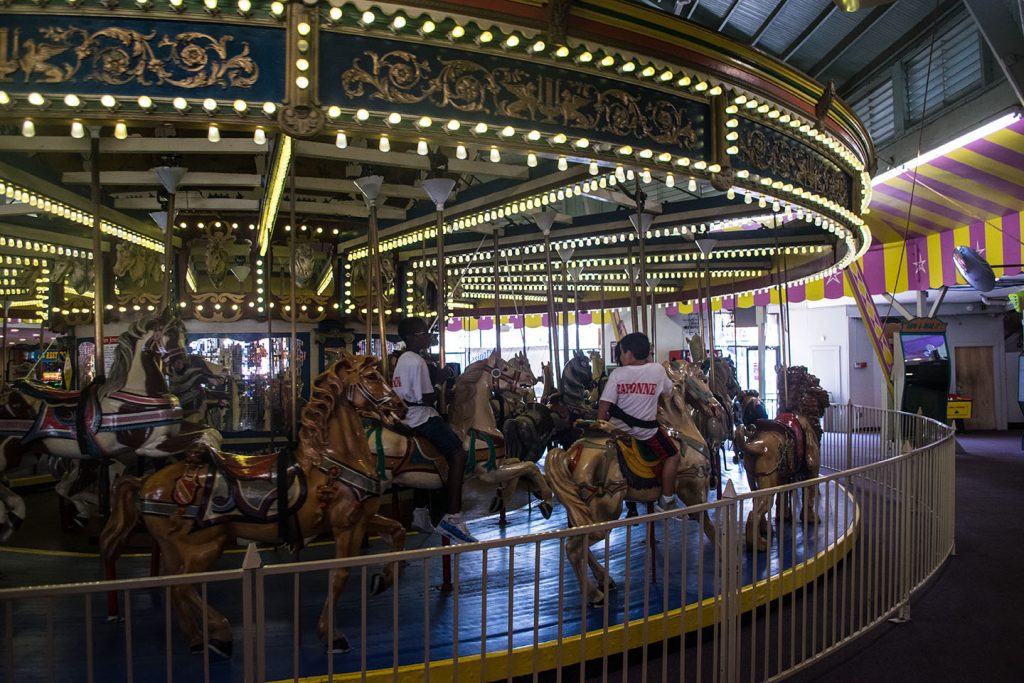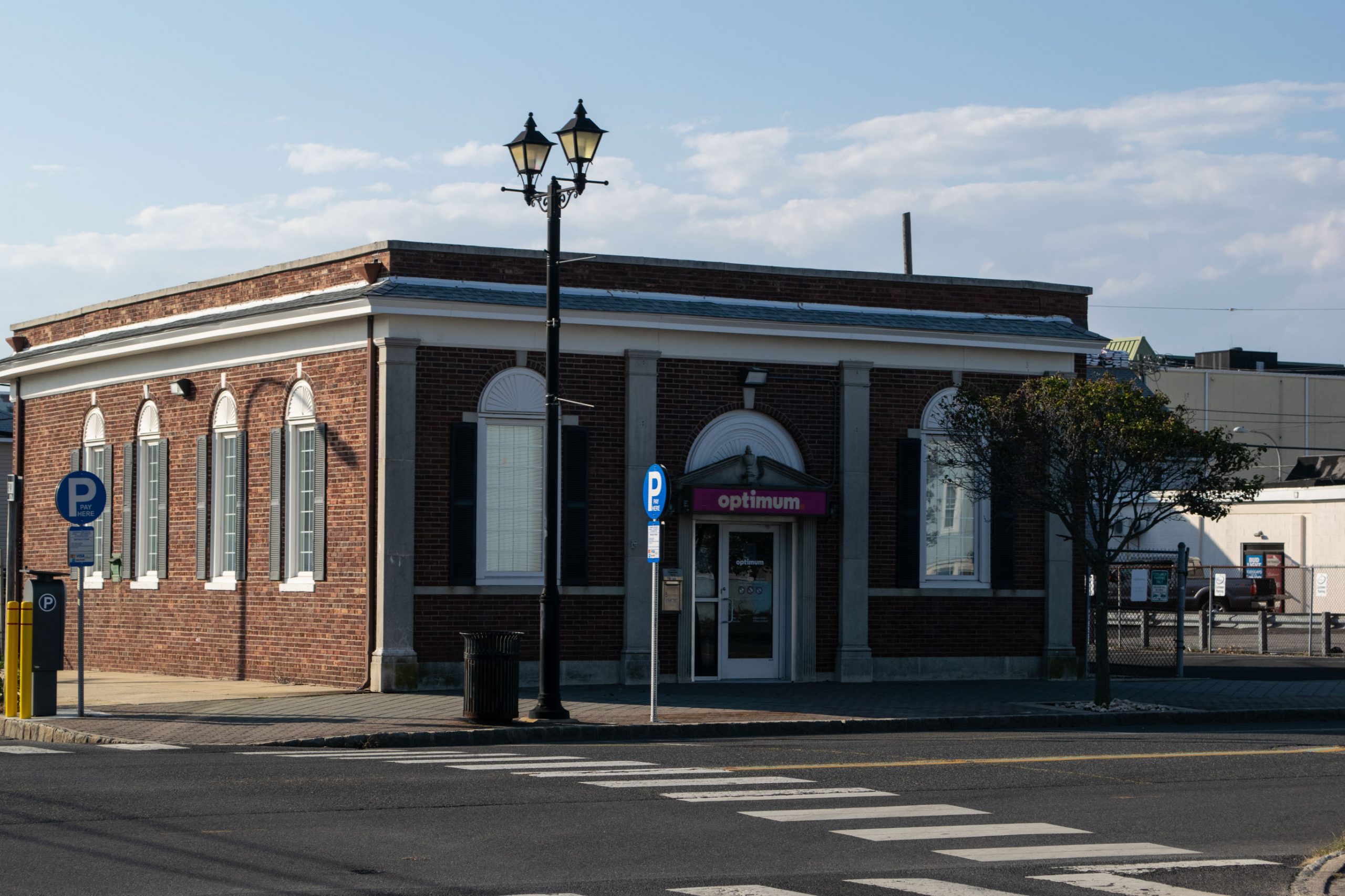Seaside Heights officials have taken the latest steps toward the finish line in completing the home of the borough’s historic 1932 Dentzel-Looff carousel, which will return to the boardwalk after a complete restoration.
While the carousel itself is partially in storage and partially in Ohio being restored by one of the nation’s only providers of such services, local officials are working on the long-anticipated boardwalk museum that will be housed in the carousel’s new building on the northern end of the boardwalk.
A few events have been held at the carousel building already, but its interior has yet to be completed. Last week, the borough council contracted with two consultants: Barbara Fahs Charles, a historian and graphic designer who specifically works on carousel projects, and Whitepoint Fine Art, a company that develops, designs and fabricates museum exhibits. The borough will also utilize Capitol Museum Systems for similar services. Charles notably designed the museum exhibit at the Texas School Book Depository in Dallas, Tx., the building from which President John F. Kennedy was assassinated.
The empty carousel building has already become something of a landmark on the boardwalk, with its circular shape, modern design and exquisite lighting that frequently attracts attention at night during a stroll along the beach. It will eventually house the working carousel amidst the museum exhibits, but the restoration process is lengthy, said Borough Administrator Christopher Vaz.
“The company doing the work has kept us updated,” he said, of the firm Carousels and Carvings, based in Marion, Ohio.
The full restoration project was originally expected to be completed for 2022, but has experienced the same setbacks most large-scale projects have in recent times. There is also a need for an extreme attention to detail, with Vaz frequently handling calls from the company, and looping in the borough’s historian as well as Dr. Floyd L. Moreland, the carousel’s namesake, to make decisions on the restoration process.
“They always have questions for us as they need to make decisions, and we make them as needed,” said Vaz. “We usually have our Historical Society president and Dr. Moreland there to help.”
The restoration could cost about $1 million, which will be mostly paid through grants and fundraisers.
Vaz will get a chance to see the carousel for the first time in September.
“I have a national conference in Columbus in September, so I’m going to drive the 45 minutes and see how the carousel is doing,” he said.

Advertisement

Police, Fire & Courts
Police Investigating Possible Shots Fired in Seaside Heights

Police, Fire & Courts
Cops: Juvenile Arrested After 118mph Joy Ride in Seaside Heights, Toms River Kills 2

Seaside Heights & Seaside Park
Seaside Heights Mourns Passing of Boardwalk Legend, Still Working Into His 90s

